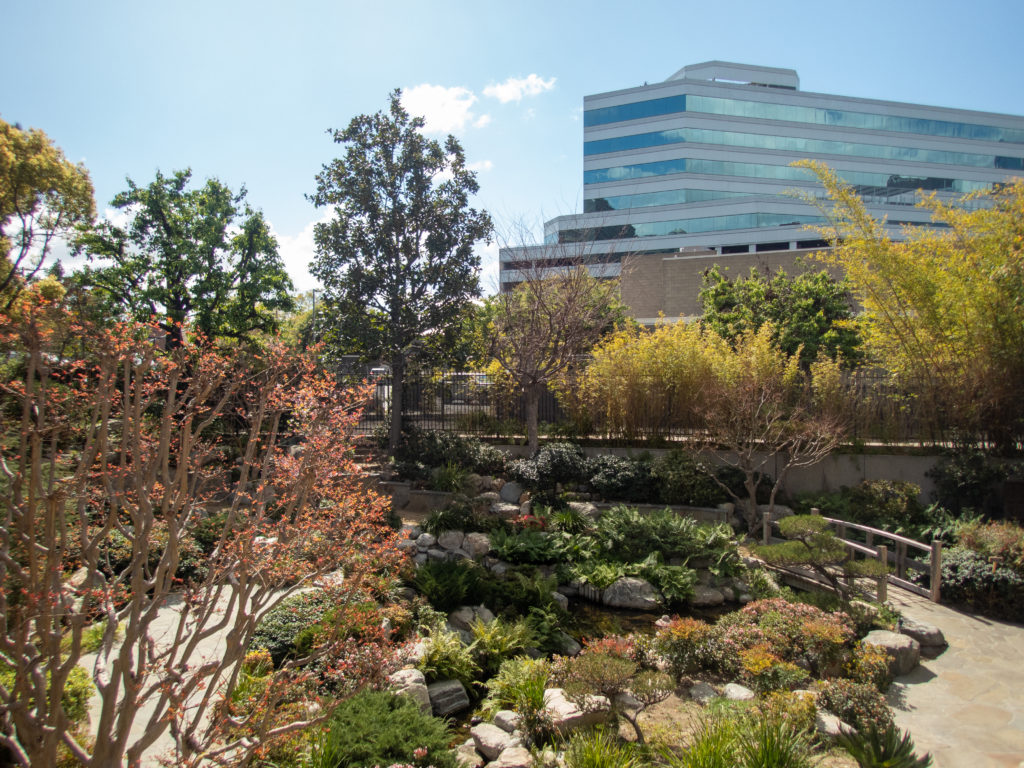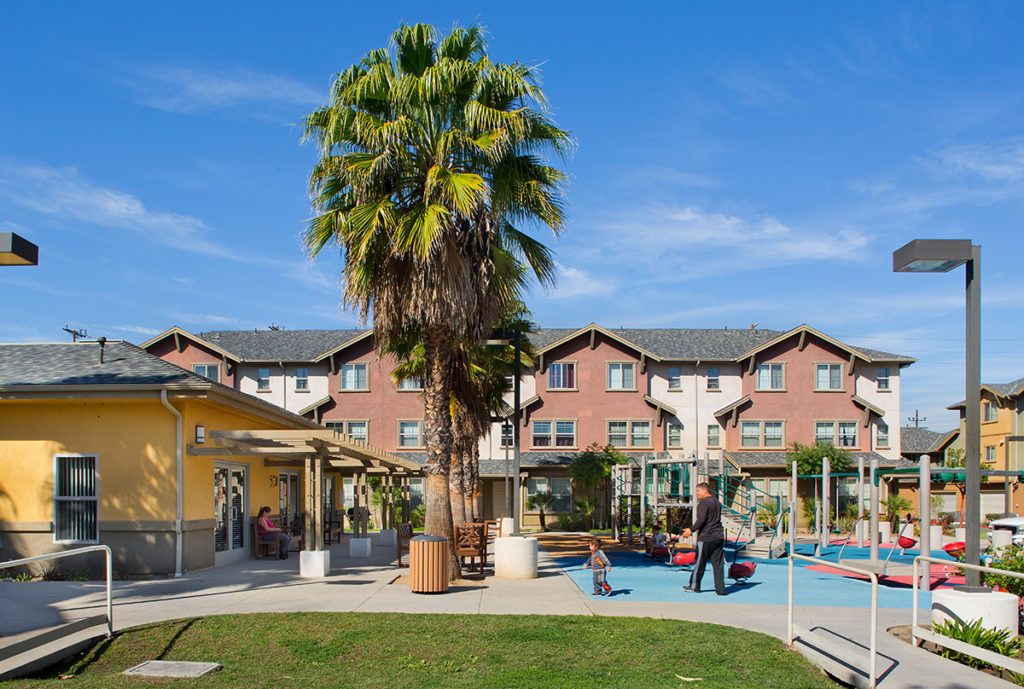Parks and Housing Together: A Win for Communities and the Environment
A new Pritzker Environmental Policy Brief discusses the benefits of parks and affordable housing joint development
Los Angeles needs more parks and more affordable housing. When compared to other major cities across the country, the City of L.A. ranks 78th out of 100 in terms of park access, acreage, amenities, investments, and equitable distribution. More than 1.4 million people in the City of L.A. and nearly five million people in Los Angeles County experience park poverty. The City and County are also struggling to provide stable affordable housing for individuals and families who have lost, or are on the brink of losing, housing and to serve the almost 70,000 people who are experiencing homelessness. These are complex and systemic problems, and there is no one-size fits all solution or a cure-all. But, creating a more livable Los Angeles—one where all Angelenos have access to a healthy environment, high-quality green spaces, and affordable housing—is necessary to achieve equity and to help communities adapt to the impacts of climate change and extreme heat.
Joint development of parks and affordable housing is a promising strategy to increase both green space and affordable housing in Los Angeles and beyond. This form of joint development combines public green space and low-income or public housing on a single site, or on different sites in the same area, to simultaneously address park poverty, housing insecurity, and climate change-related urban heat impacts. Project sizes can range from small (e.g., a single parcel of land with an affordable apartment building and a small parklet/pocket park) to very large (e.g., a multi-acre development with a large regional park and a multi-building affordable housing development). While these projects can take many forms, the central components include building new (or preserving existing) affordable housing and creating new (or rehabilitating existing) open spaces in low-income communities of color without displacing residents.

Examples of ongoing and potential joint development projects include:
- Clifford Beers Housing’s Isla Intersections Project: A 54-unit affordable housing project in South Los Angeles that opens onto a paseo, a public shared street, and open space.
- Wilmington Townhomes: Built by Abode Communities and Mercy Housing California, this 116-unit affordable townhome development includes a central courtyard and a tot lot.
- Sustainable Little Tokyo: An initiative that supports community-driven development of affordable housing, parks, green space, and other amenities in L.A.’s Little Tokyo.
- The Revitalization of the L.A. River: The effort will include hundreds of green space and active transit projects, as well as affordable housing development. One example is Taylor Yard, a retired railyard in Los Angeles, which is the site of a new affordable housing development.

Since 2016, the Los Angeles Regional Open Space and Affordable Housing Collaborative (LA ROSAH) has been working to advance parks and affordable housing projects and educate stakeholders and decision makers about the benefits of joint development. LA ROSAH coined the phrase “joint development of parks and affordable housing,” and its members include park, housing, environmental, and social justice nonprofit organizations.
Inspired by LA ROSAH’s work and informed by interviews with more than a dozen stakeholders representing non-profit, private, and government parks and affordable housing entities, the Emmett Institute’s most recent Pritzker Brief, “Increasing Access to Green Space and Affordable Housing in Los Angeles through Joint Development Projects” provides an overview of the joint development landscape in Los Angeles, focusing on how to create efficient and successful partnerships among the entities that build and maintain parks and affordable housing developments. The brief identifies barriers to building parks and affordable housing, describes the key entities involved in these types of projects, and summarizes each entity’s funding sources, major programs, strengths, and constraints.
The Emmett Institute brief’s recommendations include:
- Updating government approval processes and increasing funding for joint development projects by 1) creating a long-term source of State funding for programs that support joint development, 2) streamlining and updating funding application processes to prioritize joint development projects, and 3) awarding additional points for additional benefits;
- Creating and acquiring new sites for joint development projects by 1) developing a “Parks at Affordable Housing” pilot program, 2) strengthening the Surplus Land Act and maximizing the use of surplus land, 3) creating a green space overlay zone, and 4) building joint development projects on public school campuses;
- Improving stakeholder coordination and community engagement by 1) hiring consultants with practical experience and interdepartmental liaisons and 2) establishing city and county commissions/task forces on joint development; and
- Creating sustainable, long-term sources of funding for operations and maintenance by 1) creating a new California Special Interest License Plate for parks and an “Adopt-A-Park” program and 2) amending California bond law to allow a small percentage of bond funding to be used to operate and maintain capital projects that are funded by bonds.
Meaningfully increasing access to high-quality green spaces and affordable housing in Los Angeles is a heavy lift. But the Inflation Reduction Act of 2022 and the Infrastructure Investment and Jobs Act create new potential funding sources for joint development. Hopefully, these dollars will help fund community-driven parks and affordable housing projects in L.A. that serve low-income and unhoused Angelenos.







Reader Comments